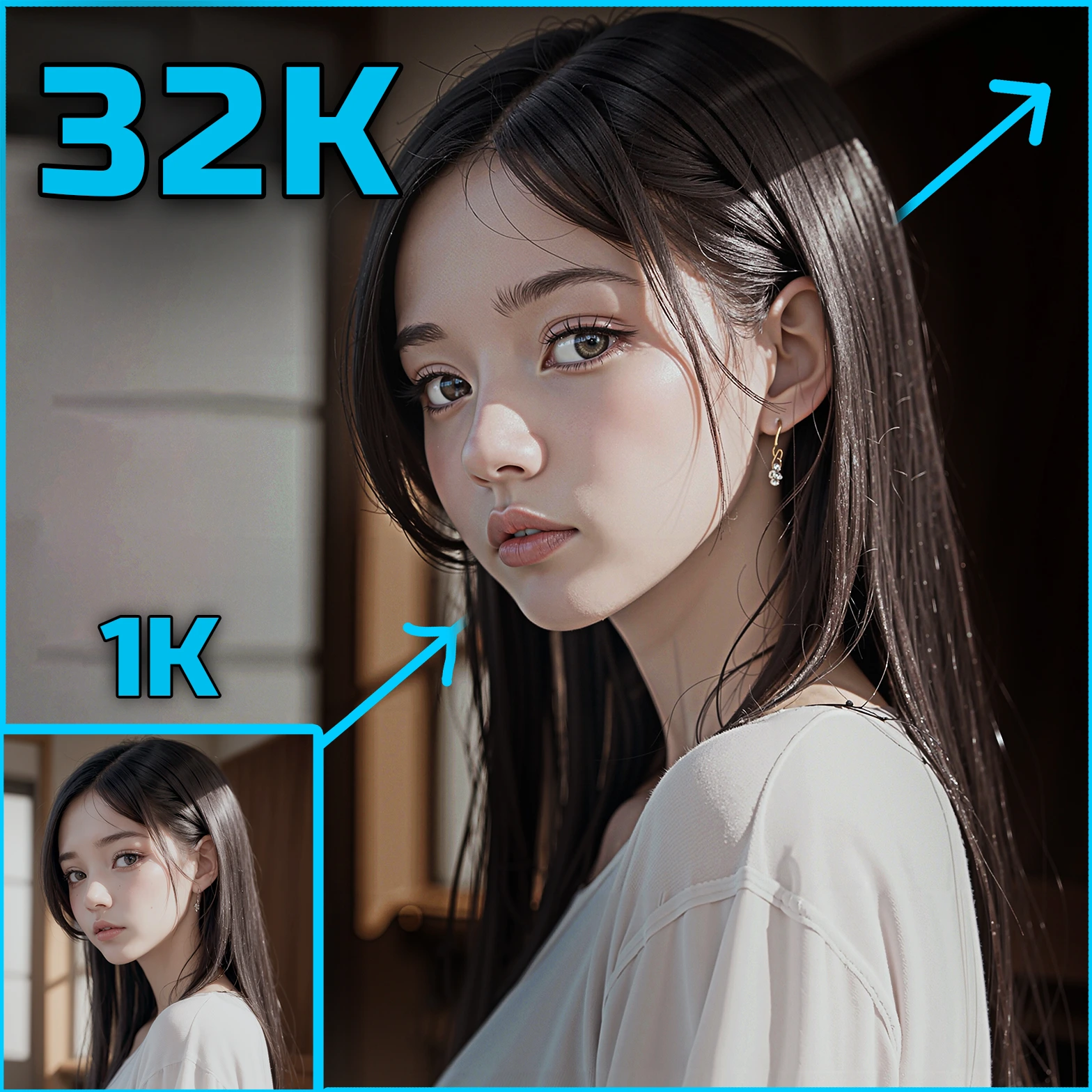ComfyUI Node: IF Load Encoder
Zuellni IF Load Encoder
CategoryZuellni/IF
m957ymj75urz (Account age: 807days) Extension
m957ymj75urz/ComfyUI-Custom-Nodes Latest Updated
2023-09-19 Github Stars
0.04K
How to Install m957ymj75urz/ComfyUI-Custom-Nodes
Install this extension via the ComfyUI Manager by searching for m957ymj75urz/ComfyUI-Custom-Nodes- 1. Click the Manager button in the main menu
- 2. Select Custom Nodes Manager button
- 3. Enter m957ymj75urz/ComfyUI-Custom-Nodes in the search bar
Visit ComfyUI Online for ready-to-use ComfyUI environment
- Free trial available
- 16GB VRAM to 80GB VRAM GPU machines
- 400+ preloaded models/nodes
- Freedom to upload custom models/nodes
- 200+ ready-to-run workflows
- 100% private workspace with up to 200GB storage
- Dedicated Support
IF Load Encoder Description
Versatile node for loading and processing DeepFloyd IF model stages, simplifying model utilization for AI artists.
IF Load Encoder:
The Zuellni IF Load Encoder is a versatile node designed to facilitate the loading and processing of various stages of the DeepFloyd IF model pipeline. This node is essential for AI artists who want to leverage the power of advanced diffusion models for image generation and enhancement. By providing a streamlined interface for loading different stages of the model, the Zuellni IF Load Encoder ensures that users can easily configure and utilize these models without needing deep technical knowledge. The node supports multiple configurations and schedulers, making it adaptable to various artistic needs and computational environments. Its primary goal is to simplify the process of model loading and prompt encoding, thereby enabling artists to focus on their creative work.
IF Load Encoder Input Parameters:
device
The device parameter specifies the computational device on which the model will be loaded and executed. This can be a string indicating the device type, such as "cpu" or "cuda". The choice of device impacts the performance and speed of the model processing. For instance, using a GPU (cuda) can significantly accelerate the computations compared to a CPU. The default value is an empty string, which means the node will automatically select the appropriate device based on availability.
model
The model parameter allows you to select the specific model variant to be loaded. Options include "medium", "large", and "extra large" for Stage I, and "medium" and "large" for Stage II. Each variant corresponds to different model sizes and capabilities, with larger models generally providing higher quality outputs at the cost of increased computational requirements. The default value is the first option in the list, which is typically the "medium" variant.
scheduler
The scheduler parameter lets you choose the scheduling algorithm used during the model's diffusion process. Available options are "default" and "sde-dpmsolver++". The scheduler affects how the model iterates through the diffusion steps, potentially impacting the quality and style of the generated images. The default value is "default", which uses the standard scheduling algorithm.
karrasSigmas
The karrasSigmas parameter is a boolean flag that determines whether to use Karras sigmas in the diffusion process. Enabling this option can improve the quality of the generated images by adjusting the noise schedule. The default value is True, indicating that Karras sigmas are used by default.
positive
The positive parameter is a string input where you can provide the positive prompt for the model to encode. This prompt guides the model towards generating images that align with the specified positive attributes. The default value is an empty string, and the input can be multiline to accommodate longer prompts.
negative
The negative parameter is a string input for the negative prompt, which helps the model avoid generating images with certain undesired attributes. Similar to the positive prompt, this input can be multiline and has a default value of an empty string.
IF Load Encoder Output Parameters:
S1_MODEL
The S1_MODEL output is the loaded model for Stage I of the DeepFloyd IF pipeline. This model is configured based on the selected parameters and is ready for further processing or image generation tasks.
S2_MODEL
The S2_MODEL output is the loaded model for Stage II of the DeepFloyd IF pipeline. Like the Stage I model, it is configured according to the input parameters and is prepared for subsequent processing steps.
S3_MODEL
The S3_MODEL output is the loaded model for Stage III, specifically the stabilityai/stable-diffusion-x4-upscaler. This model is used for upscaling images generated in previous stages, enhancing their resolution and quality.
POSITIVE
The POSITIVE output is the encoded representation of the positive prompt provided as input. This encoded prompt is used by the model to guide the image generation process towards the desired positive attributes.
NEGATIVE
The NEGATIVE output is the encoded representation of the negative prompt. It helps the model steer clear of generating images with the specified negative attributes, ensuring the final output aligns with the user's artistic vision.
IF Load Encoder Usage Tips:
- Ensure that you select the appropriate
devicebased on your hardware capabilities to optimize performance. Using a GPU can significantly speed up the processing time. - Experiment with different
modelvariants to find the right balance between quality and computational requirements for your specific project. - Utilize the
schedulerparameter to explore different diffusion algorithms and their impact on the generated images. The "sde-dpmsolver++" scheduler can offer different stylistic results compared to the default scheduler. - Take advantage of the
karrasSigmasoption to potentially enhance the quality of your images by adjusting the noise schedule during the diffusion process. - Provide detailed and specific prompts in the
positiveandnegativeparameters to guide the model effectively. Longer, multiline prompts can help in achieving more nuanced and precise outputs.
IF Load Encoder Common Errors and Solutions:
"Model not found"
- Explanation: This error occurs when the specified model variant is not available or incorrectly specified.
- Solution: Double-check the
modelparameter to ensure it matches one of the available options ("medium", "large", "extra large" for Stage I, and "medium", "large" for Stage II).
"Invalid device specified"
- Explanation: The
deviceparameter contains an invalid or unsupported device type. - Solution: Verify that the
deviceparameter is set to a valid device type, such as "cpu" or "cuda". If left empty, the node will automatically select the appropriate device.
"Scheduler configuration error"
- Explanation: There is an issue with the selected scheduler configuration.
- Solution: Ensure that the
schedulerparameter is set to one of the supported options ("default" or "sde-dpmsolver++"). If the error persists, try using the default scheduler.
"Prompt encoding failed"
- Explanation: The model encountered an issue while encoding the provided prompts.
- Solution: Check the
positiveandnegativeprompt inputs for any formatting issues or unsupported characters. Ensure that the prompts are within the model's processing capabilities.
"Model offloading error"
- Explanation: The model could not be offloaded to the specified device.
- Solution: Ensure that the
deviceparameter is correctly set and that the device has sufficient resources to handle the model. If using a GPU, make sure it has enough VRAM available.
IF Load Encoder Related Nodes
RunComfy is the premier ComfyUI platform, offering ComfyUI online environment and services, along with ComfyUI workflows featuring stunning visuals. RunComfy also provides AI Models, enabling artists to harness the latest AI tools to create incredible art.



